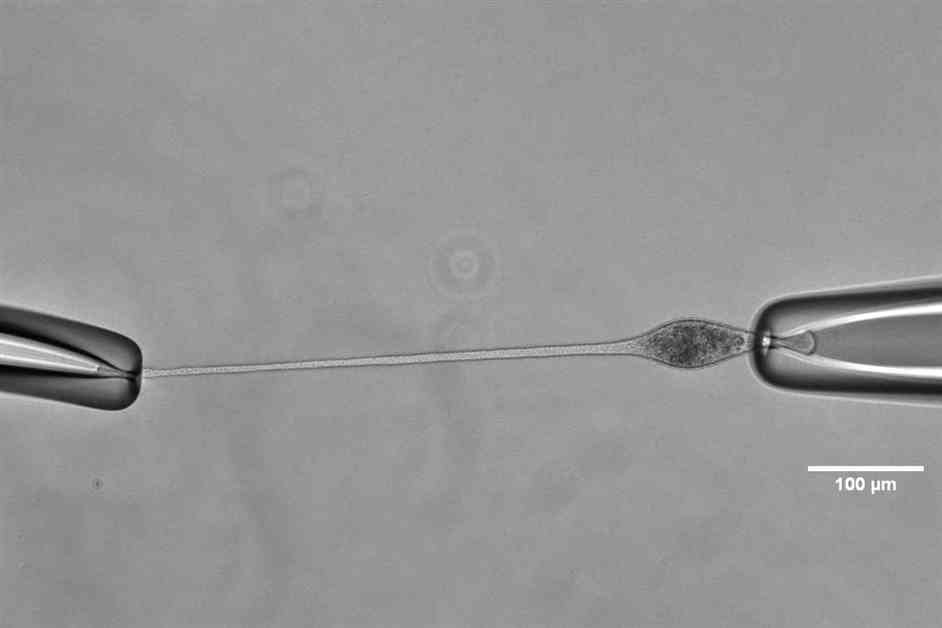Single-celled Predator Unveils Origami-like Neck Extension
Imagine having a neck so extendable that you could reach your local shop while comfortably sitting on your sofa. This seemingly impossible feat is achieved by a single-celled predator known as Lacrymaria olor, which has puzzled scientists for centuries with its ability to extend its “neck” over 30 times the length of its body. However, researchers from Stanford University, Elliot Flaum and Manu Prakash, have finally cracked the mystery behind this extraordinary feat.
Lacrymaria olor, a protist living in freshwater habitats, captures its prey using its remarkably elongated neck-like structure. The organism’s cell membrane is intricately folded into a series of pleats, allowing it to extend and retract without becoming tangled. This unique folding pattern, dubbed “curved crease origami” or “Lacrigami” by Prakash, is stabilized by microtubules, enabling the orderly unfolding and refolding of the membrane.
The key to Lacrymaria olor’s extendable neck lies in the sequential unfolding and refolding of individual points along the pleats, driven by the beating cilia covering its surface. This origami-like mechanism not only facilitates high-speed hunting but also serves as inspiration for potential applications in soft-matter engineering and medical robotics.
Flaum and Prakash’s groundbreaking research sheds light on the elegant design of Lacrymaria olor’s neck, offering insights into the potential uses of origami-inspired structures in various fields. While the discovery may lead to advancements in microsurgery and robotics, the primary motivation behind the study was the beauty and intrigue of solving a long-standing biological mystery.
The intricate folds of Lacrymaria olor’s neck serve as a testament to the wonders of nature and the limitless possibilities of scientific exploration.
Topics: Lacrymaria olor, single-celled predator, origami-like neck extension, Stanford University, microtubules, cilia, soft-matter engineering, medical robotics.



